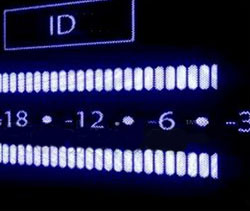Did the client request a big recording rig, but can’t afford the cost? There is another way.
While the advantages of recording with a full Pro Tools, Nuendo or Sonar digital audio workstation are many, these rigs are somewhat complicated and time-consuming in the fast-paced lives of most live sound engineers.
The DAW consists of at least a laptop and an external audio interface, but most really big rigs require the power of a desktop computer that needs a keyboard, mouse and monitor as well. Let’s face it, many engineers just want to push faders and aren’t that keen on being a computer tech during the show.
That’s where dedicated multitrack recorders come in.The beauty of the approach is that it’s pretty much hassle free. Setup is easy because all monitoring and location information can be found right on the box instead of a computer monitor.
Plus, there’s no external interface (although you may have a breakout cable) and they’re very easy to use – just arm the tracks, hit record and you’re on your way.
Many of the most popular recorders currently available have at least 24 tracks and can be expanded as needed. Let’s take a look at what’s on the market in terms of large-format recorders.
LARGER OPTIONS
The Roland Systems Group R-1000 is a dedicated, stand-alone 48-track recorder and player designed to work with the company’s popular V-Mixing Systems in any live event or production. The R-1000 can also be used with any digital console that has MADI output capabilities by using the Roland S-MADI REAC MADI Bridge.
It records up to 48 tracks of 24-bit audio in BWF format, with a removable hard disk drive ensures smooth integration with DAWs. Approximately 20 hours of recording (44.1/48 kHz) are provided using 500 GB HDD. Channels can be set to “pass thru” live from the digital snake inputs, record live input, or playback from recorder.
The R-1000 also plays up to 48 tracks of 24-bit audio via REAC, and data can be loaded from external devices. A marker function enables playback at any designated point.
It includes an analog monitor output and a headphone output. The versatile feature set includes video sync, timecode, GPI and RS-232C. USB ports allow backing up data and connecting PC for further software control. U.S. MSRP is $3,495.
The JoCo BBR-1 Blackbox provides 24 tracks at up to 96 kHz/24-bit resolution. It only takes up a single rack space and it’s possible to chain Blackboxes together and control them from one unit in really large recording situations.
The Blackbox doesn’t have any onboard storage so you have to supply an external hard drive, and that’s where it gets interesting. Until now, almost any kind of simultaneous recording of 8 tracks or more required a Firewire interface, but JoCo has figured out how to record 24 tracks at the same time on a drive using just a standard USB2 interface. This means that you can use a relatively inexpensive drive (well under $100) that can be directly connected to your DAW for editing afterwards.
The unit was made with live recording in mind so it’s extremely simple to operate. It also has zero latency, with inputs routed directly the outputs during record for safety against power failure. The BBR-1 requires three breakout cables (that are supplied) and has a street price of around $2,500.
The Alesis ADAT HD-24 has been around for a while now, but it’s still a solid performer. It has 24 tracks of up to 96 kHz/24-bit resolution (the track count goes down to 12 at 96k though), and multiple units can be synchronized to create a larger system.
The HD-24 comes with an onboard 40 Gigabyte hard drive and has two hot-swappable drive bays for recording and backup. It also has both analog and digital connectors on the back of the box so there’s no need for breakout cables.
The only downside to this recorder is that it records in a proprietary file format, so the transfer to a workstation can be tricky and isn’t as plug and play as some of the other units available. MSRP is around $1,600.























